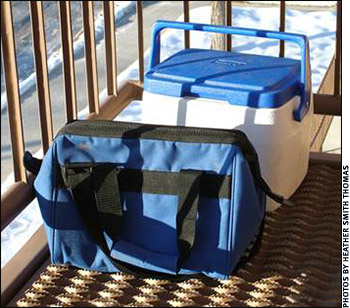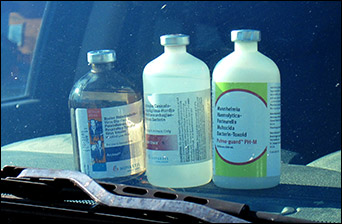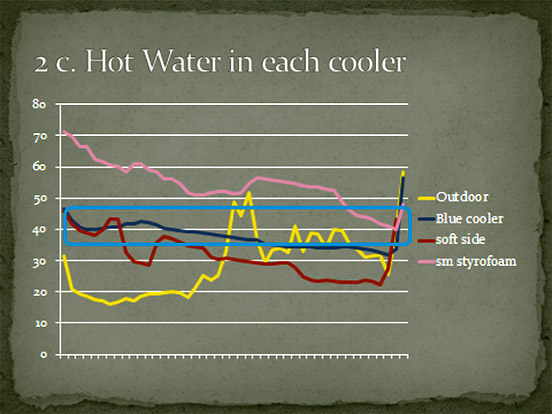Keep Vaccines from
Freezing in Cold Weather
 Use a hard-sided cooler to keep vaccines in optimum temperature range.
Use a hard-sided cooler to keep vaccines in optimum temperature range.
Shannon Williams, Lemhi County Extension educator in Salmon, Idaho, says one of the biggest challenges when working cattle in cold weather is keeping vaccines, syringes and needles from freezing.
“A few years ago I experimented with vaccine in coolers — putting them outside on the fire escape to see how long the cooler would keep them from freezing. I recommend either the hard Styrofoam coolers — used for shipping vaccine — or a regular hard-sided cooler. The soft-sided ones don’t hold the temperature where you need it long enough,” says Williams.
She also recommends bringing the cooler indoors the night before it will be used, so it will be warm. To warm a cold cooler, she suggests filling it with boiling water, then pouring the water out. A rice heating pad, heated in the microwave, then left in the cooler for a while will also warm a cold cooler. This will ensure that the vaccine and syringes kept in the cooler won’t freeze for the next few hours when working cattle.
“I often put a pint jar of hot water in the cooler. If you start out with a warm cooler, this will keep the temperature warm enough to keep vaccine from freezing for several hours,” Williams says. “This should get you through the morning, and you could refill the hot water at lunch.”
 She cautions that leaving vaccines on the pickup heater might cause them to get too warm and be ineffective.
She cautions that leaving vaccines on the pickup heater might cause them to get too warm and be ineffective.
“You walk a fine line in trying to keep [the vaccine] within the proper window of temperature. The easiest way to tell if you are within that window is to put a refrigerator thermometer in your cooler,” suggests Williams. If it starts to drop below optimum temperature, according to the vaccine label, put a new jar of warm water or a new warm rice bag in the cooler.
“You might use two coolers — one for the bottles you are filling from all the time, and the other for bottles you haven’t opened yet. Then you are not opening and closing that cooler all the time, and it will retain proper temperature longer,” she says.
According to Williams, at 36° F — the lower end of the desired window for vaccine temperature — vaccine and syringes will do fine in a warm cooler without a heat source. At 29° F, hot water inside a good cooler will keep the vaccine within the proper range for 4.5 hours. At 13° F, the vaccine will only stay liquid for about three hours before the pint of water cools and no longer heats the cooler.
During very cold weather, she recommends keeping the cooler in a pickup with the heater running. Wind chill may make a difference; needles may freeze up.
“Strategically place coolers out of the wind. You might also put a cap on the needle and put the syringe under your coat or in an inside pocket of your coveralls or vest, to take advantage of body heat,” says Williams.


Editor’s Note: Heather Smith Thomas is a freelance writer and cattlewoman from Salmon, Idaho.





